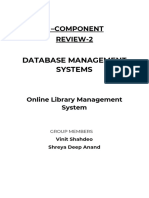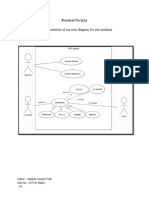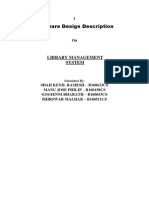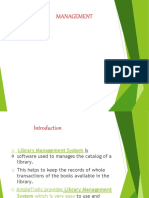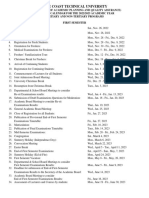0% found this document useful (0 votes)
49 views10 pagesMicro Project Format
The document outlines a micro project titled 'E-R Diagram of Library Management System' for the academic year 2024-25 at NIT’s Late Annasaheb Patil Polytechnic, Nashik, as part of the Computer Engineering program. It includes a detailed explanation of the entities involved in the library system, such as USER, ADMIN, BOOK, and BOOK RECORD, along with their attributes and interactions. The project aims to model the library's operations, ensuring efficient management of book lending and inventory maintenance.
Uploaded by
Shubham GaikwadCopyright
© © All Rights Reserved
We take content rights seriously. If you suspect this is your content, claim it here.
Available Formats
Download as PDF, TXT or read online on Scribd
0% found this document useful (0 votes)
49 views10 pagesMicro Project Format
The document outlines a micro project titled 'E-R Diagram of Library Management System' for the academic year 2024-25 at NIT’s Late Annasaheb Patil Polytechnic, Nashik, as part of the Computer Engineering program. It includes a detailed explanation of the entities involved in the library system, such as USER, ADMIN, BOOK, and BOOK RECORD, along with their attributes and interactions. The project aims to model the library's operations, ensuring efficient management of book lending and inventory maintenance.
Uploaded by
Shubham GaikwadCopyright
© © All Rights Reserved
We take content rights seriously. If you suspect this is your content, claim it here.
Available Formats
Download as PDF, TXT or read online on Scribd
/ 10

